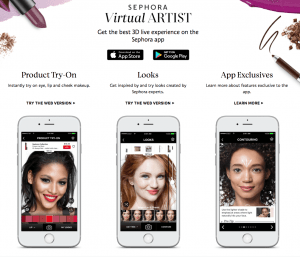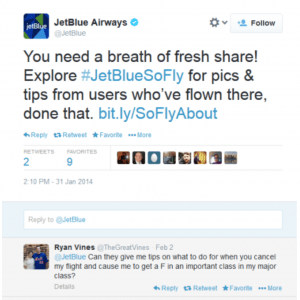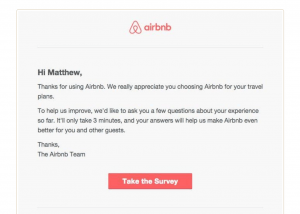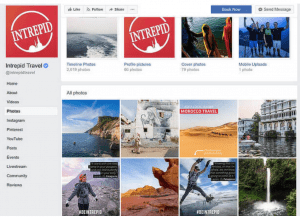Hello, and welcome back everyone! This week, I will be discussing the final part of the history and evolution of digital marketing in the late 2000’s.
Digital marketing has been continuing to grow, and it seems like the evolution will not stop here. Today, more than 4.5 billion people use the internet out of which 3.8 billion are social media users worldwide.
Social Media:
A large number of 54% of people use social media to learn more about products and brands. When it comes to online shopping and eCommerce, their users are growing by the day.
Facebook remains the world’s most widely used social platform with over 2.45 billion active users. When it comes to digital marketing, Facebook has around 3 million businesses actively advertise on their platform.
Facebook came out with Facebook chat in 2008 to connect users of the platform with one another. In 2011, Messenger, an instant messaging service owned by Facebook, replaced Facebook Chat. The key difference is that users do not need a Facebook account to use Messenger. While the two are partially connected when owning have a Facebook account, it is not required to have a Facebook in order to use Messenger.

Facebook Messenger
Analytics & Personalization:
Marketing analytics is used to measure and analyze marketing performance in order to maximize efficiency, adjust strategies, understand what is working versus what is not, create goals, improve ROI, and so on. It allows marketers to view their marketing efforts and make better use of their budget.
Google Analytics:
Google Analytics was launched in 2005. It is a web analytics service offered by Google that tracks and reports website traffic in order to analyze in-depth detail about the visitors. This product is free to all users to maximize website’s performance.
For example, bounce rate is one of the most important metrics which refers to the percentage of visitors who leave the website after visiting only one page. This could be because visitors coming into the website are not finding what they are searching for, leading to a high bounce rate. Google Analytics provides a detailed report of the pages that are experiencing a high bounce rate. Therefore, a report on bounce rate will allow marketers to refine their strategies, such as content creation, with their websites (Thakur, 2017).

Google Analytics
A company that does a great job implement marketing analytics to their brand strategy is Sephora. For those who are unaware what Sephora is, it is a multinational chain with beauty and personal care products. Sephora does a great job at delivering a digital personalized one on one experience to its customers. “One of Sephora’s key goals is to focus on creating a quality experience for each individual shopper whether on the web, on mobile or in-store (Honigham, 2020).” They truly try to understand their customers better in order to tailor products that meet their specific goals. Sephora obtains user data in order to cater to each individual need. According to Honigham, Sephora began using Google Analytics 360 Suite to its marketing efforts. They wanted to gain in depth understand of their customer’s buying behavior and purchase journey in addition to refining their digital marketing efforts (Honigham, 2020).
Sephora strives to deeply understand their analytics data in order to view which stage of the buyer’s journey their potential customer is at and “identify any barriers to purchase and how to remedy it (Honigham, 2020).” One way Sephora gathers their users information is by analyzing the actions they take on the Sephora website. By viewing the choices a shopper makes, keywords from the search bar, saved items, page sessions, and engagement, the brand is able to design a more personalized experience for their users.
As skin-care junkie, I personally shop for skin-care products from almost every month. I have oily acne-prone skin, therefore, all the searches I insert on the page are related to my specific skin type. Based on my previous searches and purchases, Sephora suggests similar products that “I may like” or “recently viewed.” By instilling a “news for you” feed on their page, specifically tailored and customized for me, I encounter a pleasant and positive experience each time. Obtaining and analyzing user data to create a personalized experience is a huge advantage, and drives great success for the brand overall.

Virtual Artist Application
Boosting customer relationships and improving customer lifetime value should always be the main use of marketing analytics. Sephora’s strategy of gaining an in-depth understanding of their customer’s buyer behavior fits this model perfectly.
References:
Honigman, B. (2020, February). How Sephora Integrates Retail & Digital Marketing Strategy. Retrieved from https://etailwest.wbresearch.com/how-sephora-integrates-retail-online-marketing
Thakur, D. (2017, February). 10 good reasons why you should use Google Analytics. Retrieved from https://dineshsem.medium.com/10-good-reasons-why-you-should-use-google-analytics-699f10194834
Venkatesan, R., Farris, P., & Wilcox, R. T. (2015). Cutting-edge marketing analytics: Real-world cases and data sets for hands-on learning. Upper Saddle River, NJ: Pearson Education.
After the burst of the internet in the 2000’s, Yahoo and Google began to navigate the digital world. The role of users online began to face a major shift due to improved browsers and search engines. Therefore, the mid 2000’s experienced a new era of technological interaction between the digital marketplace and users.
Website Design:
Between 2004-2006, website design drastically improved after the Web 2.0. The key difference between Web 1.0 and Web 2.0 is that the Web 2.0 websites allowed users to create, share, communicate, and collaborate with others without having any background experience in website design (Kelly, n.d.).

Web 1.0 vs. Web 2.0
According to HubSpot, the Web 2.0 refers to websites that are easy to use, focus on user-generated content, emphasize SEO. There were great adjustments to how websites looked, making them less flashy and more aesthetically appealing. This included improvement of color, links, images, and icons (Kelly, n.d.).
Social Media:
As mentioned in my prior post, LinkedIn, Myspace and Facebook were launched in the early 2000’s. Platforms such as Youtube, Twitter, Tumblr, and Instagram were launched in the mid 2000’s and were in their early staged of development and popularity, eventually becoming major platforms for advertising in the current era we live in.
YouTube:
Today, YouTube is one of the world’s most popular online video website. There are around 42 billion hours of video posted each month. This platform was created in 2004 and launched in 2005 to the public. The first video to ever be posted on YouTube was the founder holding his camera at the Zoo, which can be found here.

YouTube, 2005
The year 2006 marks a significant event that introduced traditional media to the digital world. This is because YouTube had signed a deal with NBC to promote its TV lineup. This deal marked the first, of many, partnerships to promote content in future (Dickey, 2013).

NBC Network on YouTube, 2006
In 2006, Google saw huge potential in Youtube and acquired the platform for 1.6 billion dollars. In 2007, YouTube began a partner program to allow creators to get paid for their viral videos. This includes the most famous one “Charlie bit my finger!” The family who posted that video made over $100,000 (Dickey, 2013).

Charlie Bit My Finger, Viral Video
Between from 2009-2012, YouTube launched video streaming services, live-streams, renting movies, and live election coverage. It is very important to note that in 2008, In 2008, an average adult watched 99 minutes of online video per week whereas today and average adult watched 82 minutes of digital video per day. The use of videos for brands are vital in order to bring them to life for users (Dickey, 2013).
Email Marketing:
Various tactics were incorporated in email marketing between 2008-2011, still used today.
Newsletters

Special Promotions

Event Announcements

References:
Dickey, M. (2013, February). The 22 key turning points in the history of youtube. Retrieved from https://www.businessinsider.com/key-turning-points-history-of-youtube-2013-2
Edwards, J. (2013, May). These screengrabs SHOW David KARP did not invent The ‘tumblelog’ that gave birth to tumblr. Retrieved from https://www.businessinsider.com/the-history-of-tumblr-2013-5
Forbin, V. (2017, February). The evolution of digital marketing Part 2: Interaction in the new Millennium 2000 – 2010. Retrieved from https://www.forbin.com/blog/post/the-evolution-of-digital-marketing-part-2-interaction-in-the-new-millennium-2000-2010
Kelly, M. (n.d.). A look back at 20+ years of website design. Retrieved from https://blog.hubspot.com/marketing/look-back-20-years-website-design
Digital Marketing in The 90’s
Digital marketing has been around for MANY years. There have been numerous changes to the industry, such as the transformation of search engine, web design, email marketing, as well as the rise of social media. I decided to split this topic into two separate blog posts. That being the case, in this week’s topic I will be discussing the history and evolution of digital marketing in the 1990’s.
The Web Era



Computers were once widely inaccessible and very expensive. In the 1970’s, the basic HP Model was around $90,000. It was not until the late 90’s where personal computers were more accessible to the public. More people began purchasing personal computers between 1993-1998, therefore, people using the internet greatly increased (Comen, 2018). According to Statista, internet usage climbed from 15 million to 78 million during that time period.

$95,000 computer from the 1970’s
The first Internet browser to ever be created was the WorldWideWeb in 1990. This allowed “texts documents to be linked together over a public network.” Take a look at the first website to ever be created here. Limited people had access to WWW, mostly governments, private corporations, and universities (McPeak, 2018).
By 1994, Netscape was founded and released. This was the first widely accessible browser for the public. Additionally, Microsoft launched Internet Explorer in 1995. There was immense competition between the two, both attempting to prove that their products are better and faster. In 1997, Microsoft released Internet explorer 4.0. which occupied 75% of the market. On the other hand, NetScape went on to create Mozilla, which later becomes FireFox in the early 2000’s. Moreover, other competitors emerged into the market in the late 90’s and early 2000’s – including Safari and Google Chrome (Blitz, 2019).

Netscape browser from 1995
First Banner Ads
The first banner ads created were placed on HotWired.com, the first digital publication of Wired Magazine. They launched the first ever clickable banner ads for fourteen companies including AT&T, Club Med, and Zima (Lafrance, 2017).
Here are the first banner ads ran by Zima and AT&T:

Zima Banner Ad

AT&T Banner Ad
During this time, there was no playbook for digital marketing strategies. A majority of brands were just trying new things online. Additionally, analytics platforms did not exist resulting in no audience targeting, A/B testing, accurate session and page view numbers, and so on (Mccullough, 2014).
Email Marketing
Marketing through email was discovered in 1990’s. Brands discovered an opportunity to connect with the audience through instant communication and ability to quickly be shared. The main method utilized was chain email, considered as spam today. Chain emails are emails that ask the recipient, on the subject or body of the message, to forward the email to multiple people. In 1998, Hotmail became very popular obtaining around 30+ million users. This technique was an easy and quick way to communicate to with users as well as access new audiences. This method was disregarded around 2003 (Bael, 2018).

Chain email example
Website Design
Web design from the 1990’s included flash animation and text documents connected by links, and background images inserted in tables.

Microsoft website design in 1995
Please stay tuned for part two, where I will be discussing the history and evolution of digital marketing from the early 2000’s!
References:
Welcome to Digital Marketing & The Modern World. The purpose of this blog series is to examine as well as discuss how digital marketing, in the past decade, has altered how businesses and organizations develop and implement their marketing strategies.
Technology has had a significant impact on the marketing industry. In the past, traditional marketing such as billboards, television, and print used to dominate the industry. However, these techniques have become outdated. People do not look through magazines or newspapers anymore to search for advertisements or product reviews, instead they look online. Now, the emphasis is on reaching consumers through the digital world.
In case you are wondering what digital marketing is, in today’s topic I will be providing you with a brief description and guide to what this industry is all about.
What is Digital Marketing?
Definition: According to HubSpot, “Digital marketing encompasses all marketing efforts that use an electronic device and internet. Businesses leverage digital channels such as search engines, social media, email, and other websites to connect with current and prospective customers (Alexander, 2019).”
In other words, digital marketing is online and internet marketing using digital tools.
Today, digital marketing is about businesses reaching customers across all platforms with personalized messages. Preferably, marketing teams want to be able to track the role of each of these messages in order to reach their ultimate goal, conversions.
Why Is Digital Marketing Important?
Think of the last purchase or two that you made. Perhaps you purchased a sofa, ordered food to be delivered to your house, rented a new home, or hired someone to fix your AC?
Regardless of what you purchased, you most likely began your search online to learn more about the product or service, price, as well as the various options on the table. The final decision was most likely formulated from the ratings and reviews you have read, consultation from friends or family members, and your own research.
In this age, most purchases start online. Therefore, an online presence is vital.
As the Internet intertwines with almost everything we do, digital marketing becomes more and more important.
Why is that so? Well, according to Statista,
- As of October 2020, around 4.6 of 7.6 billion people in the world use the internet
- 30% of consumers prefer to interact with a brand on online rather than in store
In order for businesses to be competitive, they must be present across all digital channels and devices to meet consumer needs (Clement, 2020).
Types of Digital Marketing
There are many types of digital marketing to consider. Below I have listed the five common forms.
Social Media Marketing: Promoting brand and content on social media channels to increase brand awareness and engagement, drive traffic, and generate leads.

Email Marketing: Email is often used to promote content, discounts, events as well as to direct people toward the business’s website.

Search Engine Optimization: This process of optimizing a website to rank higher in search engine results pages, which results in increasing the amount of traffic (visitors) to the website.

Influencer Marketing: An effective way for brands to reach their target audience is through influencer marketing. Brands can partner up with macro, micro, or nano influencers to reach influencer followers with their content and offers.

Content Marketing: This method involves creating and sharing relevant content (texts, images, graphics, videos, social media posts) to attract and retain the audience.

The list goes on…but for now, I will leave it at here. I hope you all gained a brief overview about industry. Please stay tuned for my next post, where I will be discussing the history of digital marketing!
References:
Alexander, L. (2019, February). The Who, What, Why, & How of Digital Marketing. Retrieved from https://blog.hubspot.com/marketing/what-is-digital-marketing
Clement, J. (2020, November). Internet users in the world 2020. Retrieved from https://www.statista.com/statistics/617136/digital-population-worldwide
HubSpot. (n.d.). Digital Marketing Made Simple. Retrieved from https://www.hubspot.com/digital-marketing




















